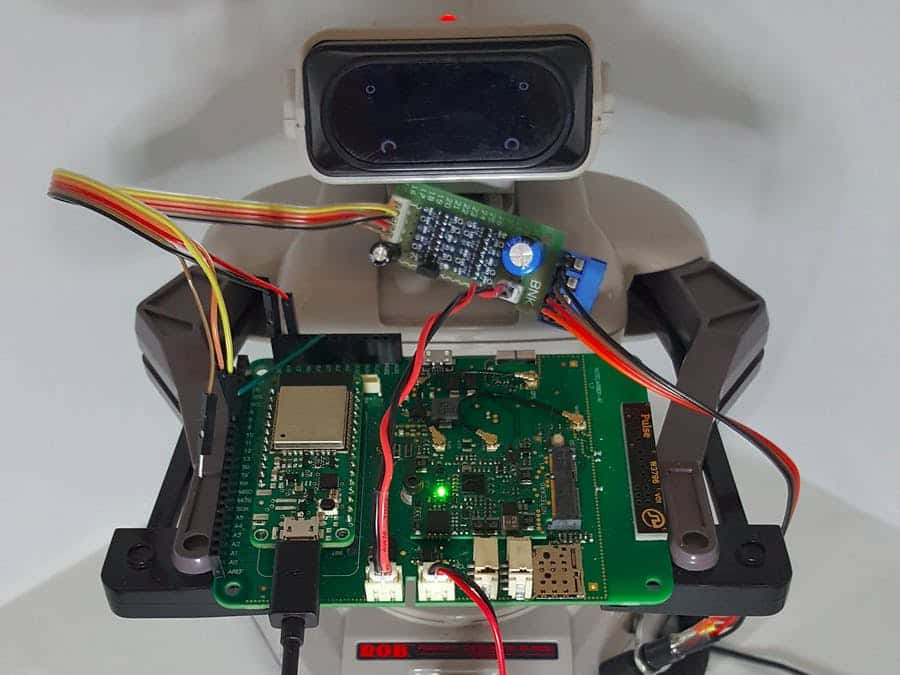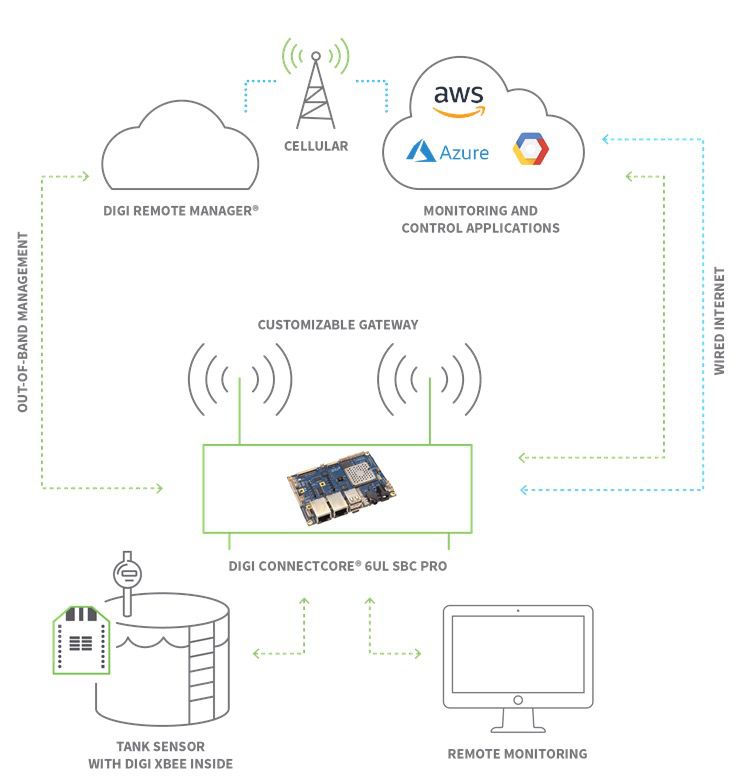IoT Remote Control: Your Guide To Managing Devices Remotely In 2024
Is it possible to control your home's thermostat, monitor your security system, or even manage industrial equipment from across the globe with a simple tap? The answer, thanks to the Internet of Things (IoT) and its remote control capabilities, is a resounding yes.
In the evolving landscape of interconnected devices, remote functionality has emerged as a cornerstone, enabling seamless connectivity and control of systems from a distance. This ability to access, monitor, and manage IoT devices, applications, and processes remotely offers unparalleled convenience, boosts efficiency, and unlocks a new realm of enhanced functionality.
Effective and secure IoT remote control requires a structured approach to mitigate potential risks and optimize performance. Let's delve into the best practices that pave the way for robust and reliable remote management of your connected devices.
- Kikikattan Latest Posts Onlyfans Leaks What You Need To Know
- Decoding Thousandhunny Leaks What You Need To Know Google Discover
At the heart of a robust IoT remote control strategy lies unwavering security. Device authentication and authorization are not mere suggestions; they are fundamental requirements to shield against unauthorized access and potential breaches. Consider them the digital locks on your connected kingdom, safeguarding your data and operations.
One particularly accessible method involves setting up a VNC server on a Raspberry Pi, coupled with a VNC client application on your device of choice. This allows you to view and interact with the Pi's desktop from anywhere with an internet connection, essentially placing the device's control at your fingertips, no matter the distance.
As we explore the diverse range of remote access methods available, its natural to consider the steps involved in setting up remote access for your IoT devices. The process can vary depending on the specific device and manufacturer; however, there are general steps to take that apply to various devices.
- Aditi Mistry Hot Live Videos Nipslips Dont Miss
- Keisha Morris Tupac Their Untold Story Life Career More
Platforms like AWS IoT Device Management provide the tools to securely onboard, organize, monitor, and remotely manage IoT devices at scale. This allows for complete control over your remote products, giving you the freedom to make adjustments from any location worldwide. It's a significant advantage for everything from air quality monitors to smart home systems.
With interfaces like the Particle IoT Device Management platform and cloud APIs, you can send commands and install new software updates to your devices with ease, all at the click of a button. It's a seamless way to maintain and update your device infrastructure without the need for physical proximity.
The year 2024 marks a pivotal point in the evolution of IoT device management and monitoring. The ways to interact with connected devices extend beyond the conventional reach of mobile or web apps and voice assistant integration. Today's consumer device end users and industrial IoT equipment operators demand a wider range of options for interacting with their connected devices.
This evolution has led to an increase in the number of ways to interact with and manage IoT devices. Here are 10 methods for managing internet of things devices remotely:
- Smartphone apps: acting as a remote control center for many IoT devices.
- Mobile apps: connecting wirelessly to the devices, allowing you to view sensor data (e.g., temperature readings) and send control commands (e.g., adjust
- Web interfaces: providing a user-friendly way to control devices from any web browser.
- Voice control: use voice commands to control devices.
- NFC tags: tapping your device to activate.
- Bluetooth: short range connection to control devices.
- Remote control protocols: allows you to remotely manage devices
- Physical controls: simple daily supervision and management
- API integration: control devices using various platforms
- Cloud Integration: using cloud platforms to manage devices.
Embracing the capability to speak commands and receive instant responses introduces a new level of ease and efficiency into managing your smart home ecosystem. The integration of IoT device management empowers both businesses and consumers to optimize their connected devices fully, be it a driverless car or a smart city initiative.
To grasp the full scope of IoT remote control, we must explore its core essence. At its simplest, an IoT device, also known as an internet of things device, is a physical device connected to the internet, capable of sending and receiving data. These devices range from everyday objects such as smart speakers and thermostats to intricate systems utilized in industrial settings.
IoT remote access is the cornerstone of managing and supporting a diverse range of IoT devices, including smart appliances, industrial sensors, and connected vehicles. This capability is paramount, eliminating the need for physical presence while facilitating control and maintenance.
A critical consideration is the potential for IoT device failures. Such failures can evolve into costly issues for a company. Therefore, given the financial and reputational risks associated with downtime or data loss, investing in remote management is far superior to dealing with the consequences of device failures.
The Internet of Things (IoT) marks the next major wave in personal computing, where everything we do will be digitally monitored and controlled. It provides major benefits to many industries, such as healthcare, manufacturing, agriculture, and smart cities.
When assessing scalability and security, Google Cloud IoT Core API stands out as a top-tier remote IoT API. It offers seamless integration with Google's robust cloud infrastructure, enabling remote management and monitoring of your IoT devices.
The advantages of remote SSH, remote access, remote connect, and remote monitoring of IoT are numerous and essential. These technologies enhance operational efficiency, minimize downtime, and provide vital data insights, leading to improved decision-making.
Remote access and control have become integral to harnessing the full potential of IoT. From smart homes to complex industrial environments, the ability to manage devices remotely empowers users to optimize performance, ensure security, and maintain control from virtually anywhere.
In this article, we've delved into what remote control in IoT encompasses, highlighting its benefits and exploring the best practices for secure and effective implementation. We've examined the multifaceted world of IoT device management, providing the insights necessary to navigate this rapidly evolving landscape.
As we've highlighted, the landscape of managing and monitoring IoT devices is constantly evolving. Modern users desire more options to interact with their connected devices, driving innovation beyond traditional mobile apps and voice assistants. This shift provides more control options than ever before.
This guide presents a comprehensive overview of the top methods available in 2024 for managing and controlling IoT devices.
Here's a table summarizing the various methods for managing IoT devices remotely, categorized for clarity:
| Method | Description | Benefits | Example |
|---|---|---|---|
| Smartphone Apps | Apps that act as remote control centers for many IoT devices. They connect wirelessly, allowing you to view data and send commands. | User-friendly, convenient, readily accessible. | Controlling a smart thermostat to adjust the temperature. |
| Web Interfaces | Devices accessible through a web browser. | Accessible from any device with an internet connection, provides a universal control interface. | Managing a security system from a laptop or tablet. |
| Voice Control | Using voice commands to control devices through voice assistants like Google Assistant or Amazon Alexa. | Hands-free operation, easy to use. | Turning on lights using a voice command. |
| Mobile Apps | Application on smartphone and other devices, which use the connectivity of the device to control other IOT devices. | Convenient, real-time data viewing, and control capabilities. | Using a mobile app to manage home automation system |
| NFC Tags | Using Near Field Communication (NFC) tags to trigger actions on devices. | Quick and easy, physical interaction | Tapping a phone to unlock a door. |
| Bluetooth | Using Bluetooth for control and management | Short-range connectivity, easy integration, and low power consumption | Controlling smart lights or audio speakers. |
| Remote Control Protocols | Protocols that allow remote access and management of devices. | Enables advanced remote control, secure and reliable. | Using SNMP to monitor a network device. |
| Physical Controls | Physical buttons or switches on devices. | Provides direct control and eases daily supervision. | Using a switch to turn on a light. |
| API Integration | Using API's to control IOT devices. | Easy Integration, flexible, scalable | control devices using various platforms like AWS |
| Cloud Integration | Utilizing cloud platform integration to control IOT devices. | Remote management, secure, cost effective | Using Azure or Google cloud |
The ability to control devices from anywhere is no longer a futuristic concept but a practical reality. IoT device management empowers businesses and consumers to make the most of their connected devices, enhancing daily routines and operations.
The article has covered all aspect of IoT remote control including how it is implemented securely and effectively.



Detail Author:
- Name : Quinn Homenick
- Username : litzy87
- Email : creola62@yahoo.com
- Birthdate : 1982-10-24
- Address : 66207 Marta Center Suite 794 Boyerfurt, AR 84309
- Phone : 618-559-4959
- Company : Green-Ullrich
- Job : Prepress Technician
- Bio : Fugit architecto voluptatem ut illum non. Blanditiis velit ut dolorem et et officia sint. Blanditiis quas voluptatem odio.
Socials
linkedin:
- url : https://linkedin.com/in/rolando1192
- username : rolando1192
- bio : Ut est aut ullam cum ut cupiditate error.
- followers : 6728
- following : 1745
facebook:
- url : https://facebook.com/rolando_dev
- username : rolando_dev
- bio : Omnis quis maiores voluptates quas laboriosam commodi sequi.
- followers : 4072
- following : 1741
tiktok:
- url : https://tiktok.com/@wolf1992
- username : wolf1992
- bio : Adipisci error eveniet nemo harum quia aut ut.
- followers : 1471
- following : 691
twitter:
- url : https://twitter.com/rolando_id
- username : rolando_id
- bio : Dicta debitis harum et eveniet. Architecto quae et et sunt. Culpa omnis veniam officia.
- followers : 3975
- following : 898
instagram:
- url : https://instagram.com/rolando_official
- username : rolando_official
- bio : Fugit facere aliquid tempora. Velit debitis ut reprehenderit. Reiciendis et et voluptates nisi.
- followers : 4232
- following : 2106